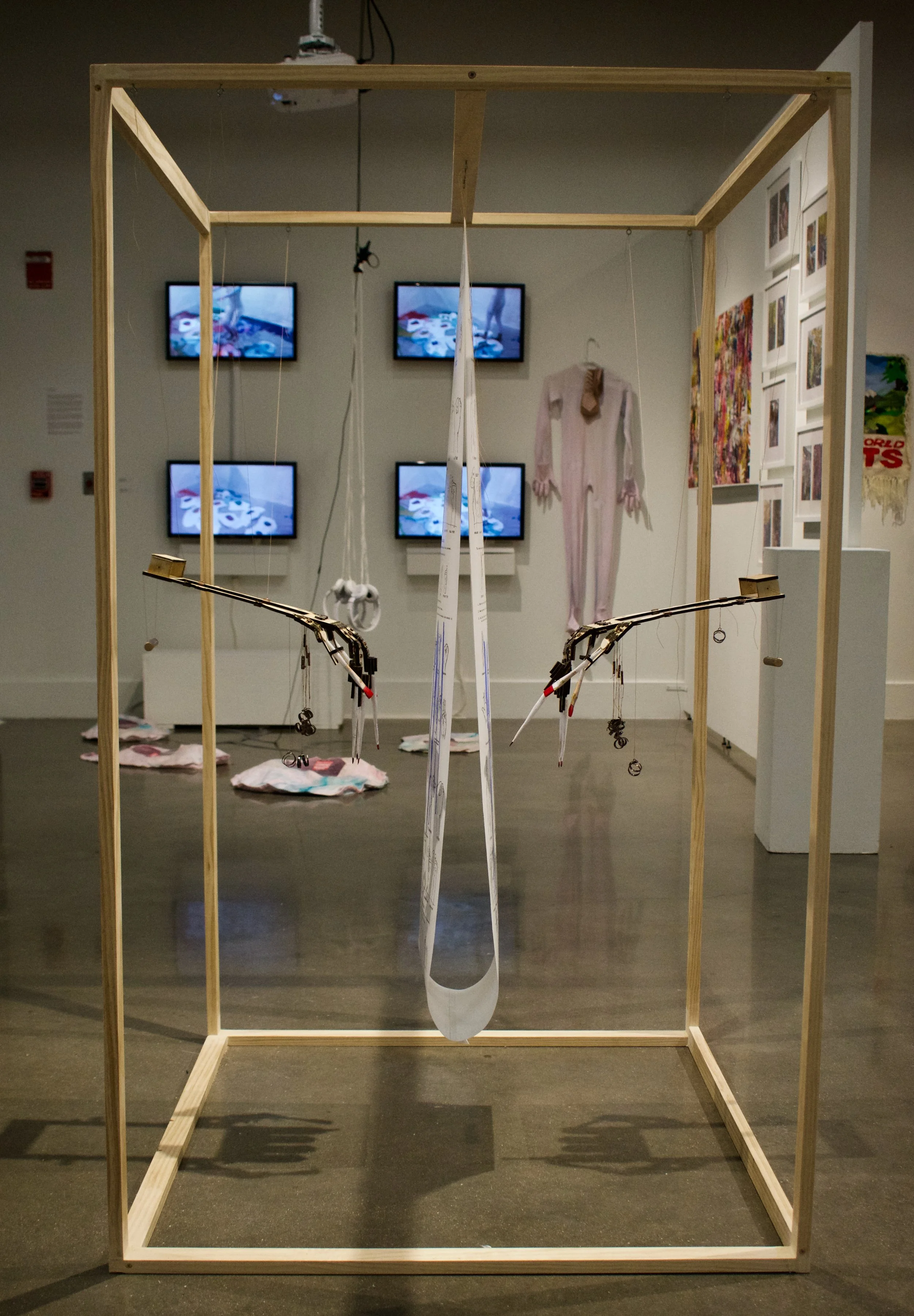Artist Statement
Within 24 hours, I went from running 12 kilometers to laying in a hospital bed with a fever of 105.7ºF, unable to move my arms or legs. I tested positive for the common flu virus, but in my body, the virus manifested as a series of debilitating symptoms that included partial paralysis and extreme exhaustion. I was afraid I was going to die, yet I was too exhausted to truly comprehend or care.
Going from being an independent teenager on the varsity cross country team to becoming completely reliant on trained nurses to get out of a bed was a dehumanizing experience. In recovery, learning how to move my legs to walk, training my arms to be strong enough to braid my hair, and practicing sitting up in a chair for an hour a day to keep blood clots from forming were all a part of my new routine. Relearning what I mistook to be basic tasks transformed myself into the resilient artist I am today.
Prior to the flu, I was a runner who did art as a hobby. I began incorporating art into my rehabilitation exercises, and recovery suddenly became more tangible. Painting and drawing allowed me to create something tangible while simultaneously strengthening my arms and improving my fine motor skills. I began thinking of myself as an artist who used to run for a hobby.
I also began thinking a lot about abilities and art. Who creates art? How? Why? I believe the human race has lost its ability to see itself as an artist. Prosthetics are created to help people replace parts of their body which they have lost; can we create prosthetics to not only replace lost body parts, but also to help people replace a lost identity? By challenging the idea that art is not for everyone and designing a wider range of devices, we can focus on making the creation of artwork—and the identity of “artist”— more accessible for everyone.
Recently I have developed a stronger passion for sculptural design. The wearable sculptures I create are digitally rendered then brought to life by combining wood, metals, and other firm materials. I find this medium invites people to create work in a method previously unknown to them, while also inviting them to consider how they can create strength from being an artist. Digital video is another medium I use to inform my audience, mostly to illustrate my past experiences with recovering from from the flu. The videos I create initiate empathy in the viewer, opening their minds to what an artistic healing process looks like.
Discovering and creating art is what allowed me to develop resilience while in the midst of my debilitating illness. I hope that by using the art I now create, others will be able to manifest their own resilience—and maybe remember that they, themselves, are artists too.






